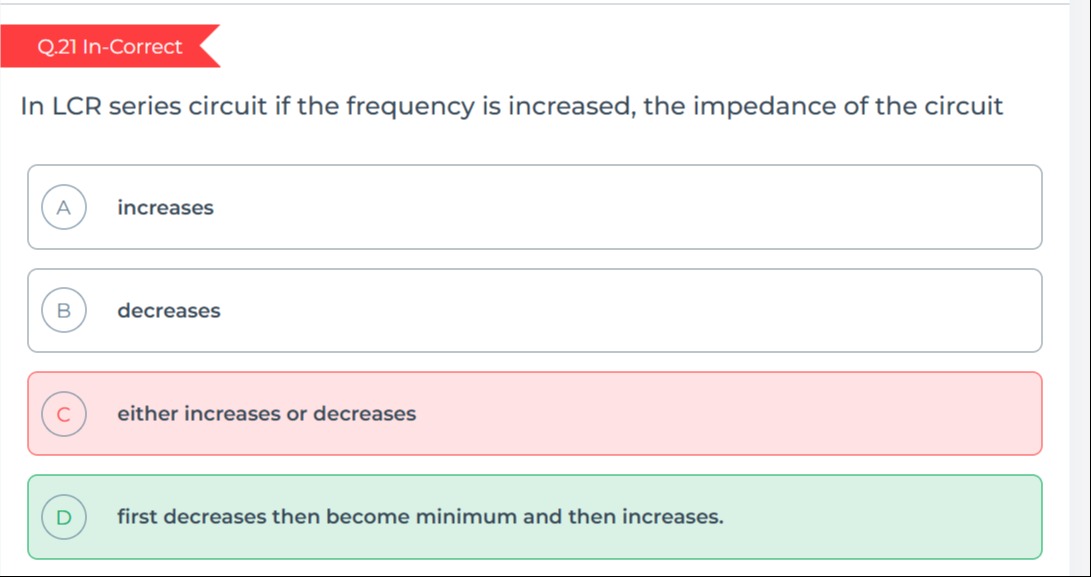Question
Question: In LCR series circuit if the frequency is increased, the impedance of the circuit...
In LCR series circuit if the frequency is increased, the impedance of the circuit

increases
decreases
either increases or decreases
first decreases then become minimum and then increases.
first decreases then becomes minimum and then increases.
Solution
For a series LCR circuit, the impedance is given by:
Z=R2+(ωL−ωC1)2At very low frequency (ω is small), ωC1 is very high compared to ωL, so ∣ωL−ωC1∣ is large and hence Z is high. As the frequency increases, ωC1 decreases while ωL increases. The difference ∣ωL−ωC1∣ reduces, and the impedance decreases until resonance (where ωL=ωC1 and Z=R; minimum value). Beyond resonance, the inductive reactance dominates, so the impedance increases.
Thus, as the frequency is increased from a very low value, the impedance first decreases (tending to a minimum at resonance) and then increases.
Minimal Explanation:
The impedance in a series LCR circuit is high at low frequency due to a high capacitive reactance, decreases to a minimum at resonance, and then increases as the inductive reactance dominates.
